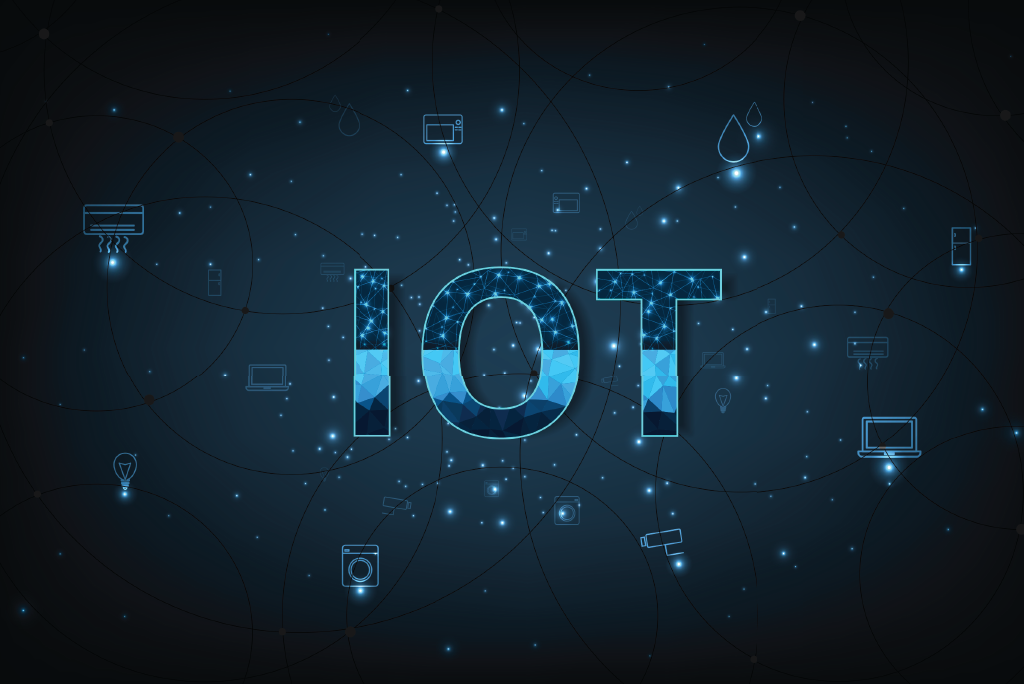
By 2025, there will be over 23 billion connections on the Internet of Things (IoT) compared to 15.1 billion in 2021, according to a recent report from GSMA, an industry organization that represents the interests of mobile network operators worldwide.
The Internet of Things is a network of interlinked devices that harness the internet to continuously capture and process data and analytics from physical objects. As IoT adoption increases and it becomes more integrated, global supply chains are expected to reap major benefits. For example, IoT devices create multiple interaction points along supply chains that provide advanced data collection, factory automation, GPS shipment tracking, and enhanced communication between machines and people.
According to Dipti Parmar, writing in CIO, there are two major ways that IoT – combined with artificial intelligence, wireless sensor networks, 5G, and big data – will make supply chains smarter, faster, and more efficient:
Eliminates dependency on complicated infrastructure:
Traditional tracking systems for supply chain analytics are expensive, time consuming, overly complex, and often lead to dependency on vendors. IoT-based data loggers, which can be attached to shipments and send data to cloud-based servers, can solve these issues. Once attached to shipments, these loggers can monitor thousands of goods traveling across the supply chain. This level of detail gives everyone involved valuable insight into any problems —such as temperature changes or container tilting — that could be affecting the shipments in real time. The loggers are also more affordable than traditional hardware used to track shipments, and can provide enhanced analytics for enhanced decision making.
Provides equal access to data:
In an IoT-enhanced supply chain, data is accessible in real time to everyone involved in the shipment of goods. With improved monitoring and visibility, manufacturers, suppliers, distributors, and retailers can:
- make better and faster decisions
- save time and money
- improve forecasting
- reduce waste
- take more calculated risks
- increase revenue
IoT Depends on Advanced Cloud Technology
While the Internet of Things has the power to transform supply chains, its success will depend heavily on cloud computing technology. This is because IoT devices must be able to connect and send information to the cloud in a centralized location, which allows devices to communicate with one another. As such, organizations that want to adapt the benefits of IoT also need to embrace advanced cloud technology.
“The cloud helps in this operation by streamlining and optimizing machine-to-machine communications and facilitating this across interfaces,” writes Ritesh Sutaria, Director of Prompt Softech, a custom forward development company, in IoT for All. “With the increased interactions between many connected devices and immense volumes of data generated, organizations will have to find a cost-effective way to store, process, and access data from their IoT solutions.”
Ongoing Disruptions Will Drive IoT Adoption
Despite its many benefits, industries have been hesitant to adopt IoT. However, ongoing challenges in the supply system, such as disruptions caused by the COVID-19 pandemic, will likely encourage more organizations to start adopting the technology in coming years.
“Speed and reliability have always been and will continue to be the driving factors of the supply chain for the foreseeable future,” writes Parmar. “The next few months will be critical for companies that bank on data to improve their supply chains. They have a never-before opportunity to build on the momentum and insights gained as a result of COVID-related disruptions by adopting newer technology and systems. The ones that fail to adapt to changing realities will likely be left behind by more agile competitors.”
As organizations adopt IoT, they will increasingly depend on technical professionals who understand this complex technology. Learning the applications, principles, and trends behind the technology is a great way to make your skills more relevant.
Want to Improve Your IoT Skills? Check out the IEEE Academy on IoT
Are you a professional engineer interested in improving your understanding of the Internet of Things? IEEE has created a new academy that combines existing IoT educational materials with the latest research and developments to help guide technical professionals in this expanding field.
IEEE Academies are primarily for technical professionals who need to understand new technical information quickly so they can apply it to their work. In addition to gaining new skills and knowledge, participants will also earn a certificate upon their completion. There are two IoT learning paths from which to choose— and both are available on the IEEE Learning Network (ILN)!
IEEE Academy on Internet of Things (IoT): Communications Standards
Communication technology is an essential part of the Internet of Things as it allows devices to connect to each other. This learning path covers the basic principles of communication technology and practical usage of standardized communication. Learn more.
IEEE Academy on Internet of Things (IoT): Computing Platforms
IoT computing platforms are essential to the development and deployment of IoT applications. This learning path covers all these aspects by providing an overview of the current state-of-art and future trends on computing platforms for IoT applications. Learn more.
What Are IEEE Academies?
IEEE Academies are designed to teach in-demand technical concepts in a new way to IEEE members working in industry. This new learning format at IEEE will help members understand a technical concept without needing a deep background in that technology. This will ensure they understand the fundamental concepts so they can apply them in the context of their general work and technical needs. Learn more about IEEE Academies.
Resources
Sutaria, Ritesh. (8 April 2022). Unveiling the Potential Relationship between IoT and Cloud Computing. IoT for All.
Parmar, Dipti. (12 April 2022). How data from IoT devices is changing supply chain analytics. CIO.
The Mobile Economy 2022. GSMA.


[…] in people’s daily lives. This is especially true when it comes to smart cities that commonly use Internet of Things (IoT) technologies. However, according to Jamie Cameron, director of digital solutions at building security company […]